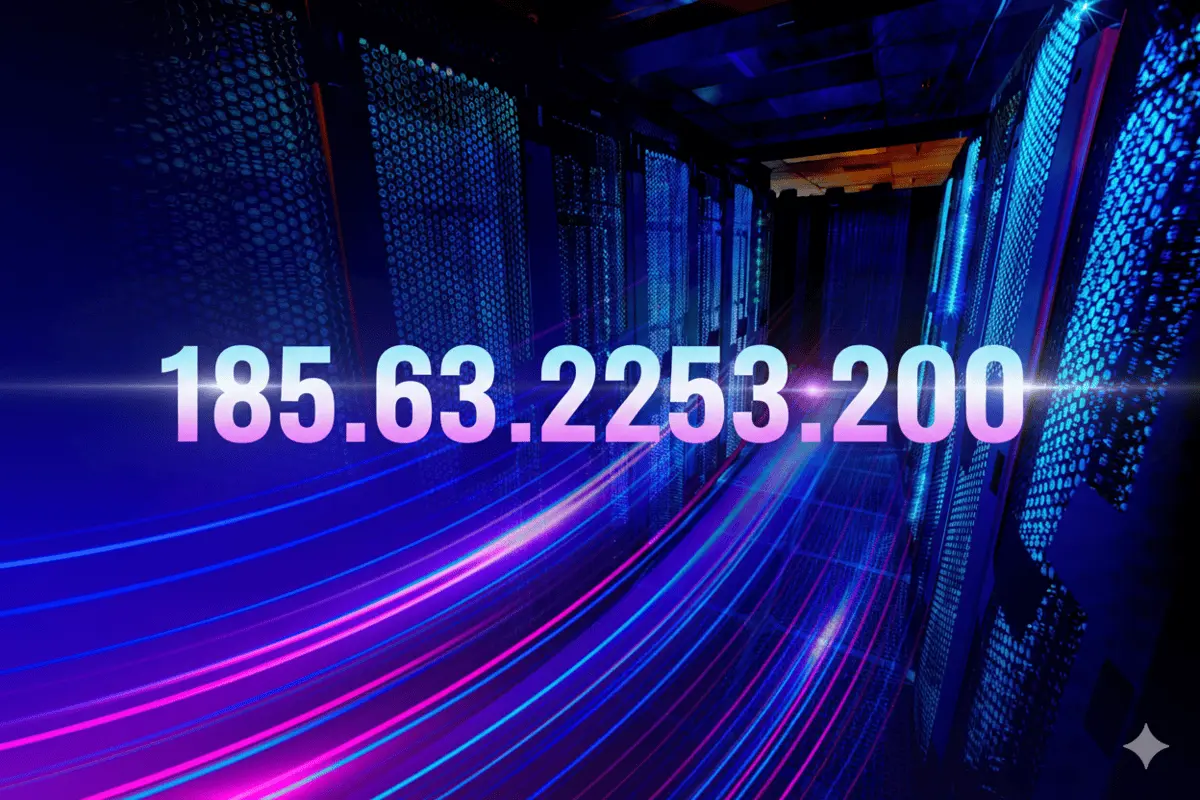In the first 100 words, we explain what you need to know about 185.63.2253.200. It looks like an IPv4 address, but the third segment (“2253”) exceeds the allowed range of 0 to 255. This invalidation causes confusion when the string appears in logs, forums, or configuration files. Understanding why it persists, the risks it poses, and how to validate IP addresses helps improve digital hygiene and cybersecurity awareness.
Why is 185.63.2253.200 not a valid IPv4 address?
IPv4 addresses follow a format where each octet is between 0 and 255. In this case in 185.63.2253.200, “2253” greatly exceeds the upper limit, immediately disqualifying the sequence as a legitimate address. Although it mimics an IP structure, it cannot be routed, pinged, or geolocated.
How 185.63.2253.200 appears and why it’s not always harmless
Typographical or formatting errors
Often, this string is due to a typo; perhaps someone intended to use “185.63.253.200” or “225.200”.
Placeholders or test data
Developers may use invalid address patterns like this when creating scripts or simulations, especially in educational or demonstration environments.
Potential cybersecurity triggers
In some cases, malformed strings are used in traps or evasion tactics. Attackers can spoof invalid IP addresses to fool logging or analysis tools.
Cybersecurity Consequences of Invalid IP Entries
False Alarms and Log Contamination
Security tools may flag repeated invalid IP entries, leading to false positives and wasted investigation efforts.
Spoofing or Bot Activity
Strings like this can come from automated bots or brute-force tools testing address ranges, or they can be forged headers to evade detection.
Impact of Misconfiguration
When invalid IP addresses are entered into firewall rules or DNS entries, they can lead to connectivity issues or security breaches.
How IP Address Validation Works
Network tools typically validate addresses by verifying that each octet is between 0 and 255 and contains exactly four segments. Any deviation, such as “2253,” is flagged as invalid. Popular tools like Wireshark, WHOIS lookups, or Shodan simply ignore these entries.
What we learn from real-life incidents
Organizations reported anomalies in logs containing the 185.63.2253.200 address, necessitating further audits. In some cases, the chain revealed faulty login forms, while in others, malformed IoT firmware updates triggered error loops.
Tools to analyze suspicious IP strings
Use tools such as:
- IP address lookup platforms to verify validity
- Ping or traceroute commands to verify connectivity
- Regular expression or validation scripts to detect malformed patterns
Best practices for IT and cybersecurity teams
- Apply input validation that rejects invalid byte values
- Audit logs to detect recurring unusual IP patterns
- Use anomaly detection rules in firewalls and SIEM systems to detect malformed addresses early
- Block suspicious or malformed IP addresses when contextually appropriate
A large volume of invalid input should prompt investigation into automated scripts, bot activity, or misconfigured hosts.
Frequently Asked Questions (FAQ)
Can an IP address contain a number greater than 255?
No. Each octet of an IPv4 address must be between 0 and 255.
Why does 185.63.2253.200 appear in searches?
This could be due to a typo, a formatting error, or a misconfigured registry entry.
Can hackers use invalid IP addresses?
Yes. Some hackers use IP spoofing techniques to disguise their activities.
How do I know if an IP address is dangerous?
Use IP address analysis tools like AbuseIPDB and Shodan.io to check if an IP address has been flagged for malicious activity.
What should I do if an unknown IP address appears in my network logs?
Check the IP address with an IP address lookup tool.
Check if the IP address is blacklisted. Block it if it exhibits suspicious behavior.
Conclusion
Although 185.63.2253.200 may appear structured like an IPv4 address, it fails technical validation and offers no real connectivity. However, its presence speaks volumes about formatting errors, bot behavior, and network hygiene. IT teams and knowledgeable users who understand the reasons for its invalidity, know how to validate and respond to it, and implement secure logging practices will be better prepared in a world where even the smallest anomalies can reveal deeper problems.










